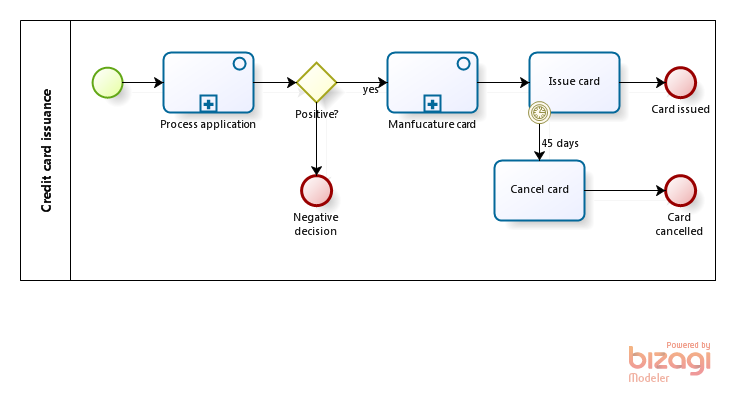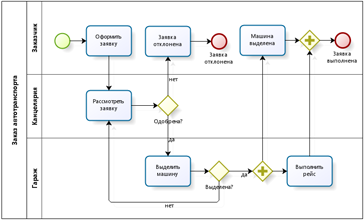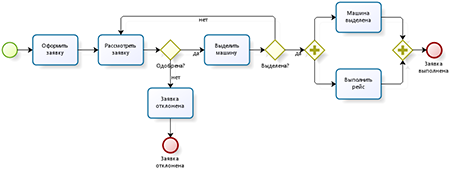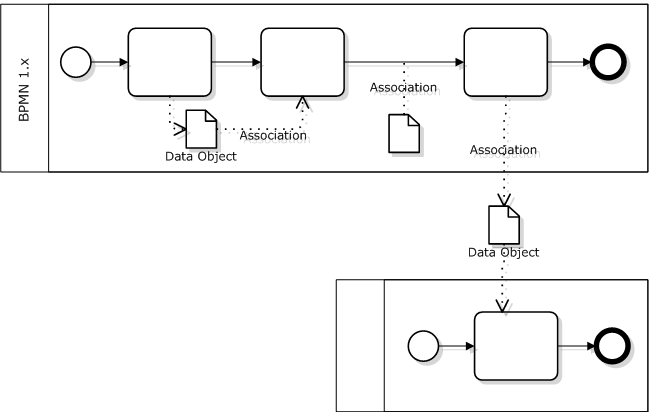It’s no secret that different people call BPM very different things. Some people call BPM the good old reengineering with its «as-is» and «to-be», others put BPM label on documenting business processes and/or quality management initiatives, the third believe that business process automation within ERP is BPM too, the fourth equate BPM with BPMS purchasing and implementation, fifth do BPM with ECM-embedded workflow, etc.
I personally join those who treat BPM in the spirit of Smith and Fingar’s «Business Process Management: The Third Wave» - as a coherent discipline comprising methodology, technology (BPMS) and (I add on my own) agile implementation. Qualifying BPM features for me are 1) closed loop management of business processes and 2) bridging the gap between business and IT. I dislike the idea of introducing a new term to label practices already existed for a decade. (BPM acronym spread widely since 2003 while re-engineering exists since the early 90s and the quality management ideas apply to the 80s.)
BPM in the broad and narrow sense
So we have two basic BPM interpretations:
- BPM in the broad sense, or business process management, or BPM as an umbrella concept - whatever methods or technologies dealing with business processes
- BPM in the narrow sense, or Business Process Management - a specific holistic discipline (methodology plus technology plus implementation) established in the first decade of XXI century.
Some time ago Alexander Samarin proposed to develop a commonly agreed BPM definition. Sadly enough, the commonly agreed definition cannot be worked out, it can only emerge. It’s hard to reach consensus because at the end of the day each vendor and consultant claims that BPM is what his organization does. BPM is a strong brand nowadays.
This state of affairs isn’t favorable to BPM market indeed (in any interpretation of the term). What the potential BPM project sponsor should think about this range of opinions? “If you’re so smart and pretend to teach me then why can’t you agree on basic definitions with each other?”
Sometimes it generates fun: a participant of a recent bpms.ru seminar representing major Russian insurance company insisted that his company doesn’t do BPM while other participants urged him it does, appealing to his own words. So what is BPM anyway if we can’t even say for sure whether we are doing it in our own company?
I believe we should accept that there is no and won’t ever be a single interpretation of BPM, period. Incidentally, there is no and won’t be a single interpretation of the term “business process”. Consequently, anyone who wants to speak on these topics, request or offer a service in this area must begin with a definition: what he/she personally calls BPM and what he/she calls a business process. At a minimum, the responsible professional should clarify whether he/she follows a broad or narrow-sense definition of BPM.
But it’s better to position ourselves more precisely.
A three-level BPM classification
Gartner’s BPM Maturity Model can be used as a starting point for BPM classification.
In 2006 Gartner proposed a 6-level (zero to five) BPM maturity model that I dare to summarize as follows:
- Phase 0. Functional management. Organization has yet to realize that its performance as a whole depends not only on how certain functions are performed, but also on how well these functions coordinate with each other, i.e. the quality of business processes interconnecting them.
- Phase 1. Business processes awareness. The organization explores itself through the prism of business processes. End-to-end business processes are discovered and process owners are appointed. Everyone draw process diagrams. Gaps and bottlenecks are identified and eliminated, without investments into processes automation (BPMS).
- Phase 2. Automated execution and control of business processes. The organization learns to manage business processes in a continuous loop model - execute - analyze and seeks to improve their effectiveness, mostly on a separate processes basis.
- Phase 3. Execution and control of end-to end business processes. Process boundaries are expanded under the control of BPMS, inter-process communications are worked out and end-to-end processes are established connecting the company to its customers/partners and/or their business processes.
- Phase 4. Explicit and automatic link between business goals and business processes. With the help of simulation and dynamic business rules, business goals changes trigger automatic rebuilding the network of business processes.
- Phase 5. Adaptive business structure. The ability to quickly react to changing business environment, anticipate these changes and create opportunities through deeper integration into various markets and partner ecosystems.
The last two phases, I would attribute to science fiction category. Guess nobody has seen them in reality by now, including Gartner analysts. Phase zero isn’t a process phase really, so three phases remains:
BPM-1: Business processes description and modeling
BPM-2: Managing separate business processes
BPM-3: Managing end-to-end business processes networks
Well this is a working set. The original Gartners’s model is so cumbersome and expressed in such a language that I personally am unable to explain it to an ordinary businessman.
We may further define sub-levels:
- BPM-1starts with text process descriptions, a more advanced version is graphical process modeling capable to generate text description automatically and a single repository of business processes.
- BPM-2 doesn’t always implement continuous improvement cycle, in many cases it is reduced to one-time process automation.
If both clients and vendors/consultants referred to classification above while specifying their demands and offerings respectively, then it would contribute to better mutual understanding. E.g. a customer could describe itself as follows:
We are now at BPM-1 level using text descriptions mostly. In order to pass ISO9000 certification on a regular basis, we need full BPM-1 competence on our own, with graphical models and a single process repository.
We need an external consultant with proven industry expertise and BPM-2 qualification for supporting processes in human resources area.
We need an external consultant with BPM-3 qualification for “Order-to-Cash” operational processes. In addition to the process work, it should help us create a competence center that would do 80% of the work after 12 months.
After that it could select consulting companies capable at BPM-1, BPM-2 and BPM-3, and have a close look to the toolbox:
- BPM-1 requires a process modeler/designer, Enterprise Architecture tool would also be handy
- BPM-2 can be supported by a workflow engine built-in into ECM or CRM
- BPM-3 requires a full-scale BPMS, it can be used for BPM-1 and BPM-2 tasks, too
One should not look at this classification in such a way that the levels are always better than lower ones and that we should put all efforts in advancing to higher levels for all our processes. Gartner’s model produces exactly this view and I believe it’s wrong.
The key words are “for all processes.” Trying to evenly raise the maturity of all processes is a recipe for disaster. In accordance with Pareto’s law, 20% of processes are responsible for 80% of the company’s performance. Wouldn’t it be wiser to focus on these 20%?
Sure the BPM-3 grants much more control over the processes than BPM-1. But it’s much more expensive as well! Complete BPMS implementation of an end-to-end business process is a custom IT development, apart from other considerations. And cheap custom IT development just doesn’t happen.
BPM-3 consultant can achieve more tight control over a business process yet it doesn’t entitle him to look down on BPM-1 colleagues because he/she can achieve the results in a relatively narrow front while their scope is much wider albeit maybe not so deep.
My second complaint about Gartner’s maturity model: it produces such a view phases should be passed successively, step by step. Not necessarily!
An organization infected with process management ideas may set itself a goal to get from zero to third BPM phase. OK, it’ll take time to gain the necessary competence and finally do the job but anyway the intermediate stops at levels 1 and 2 are not required.
BPMN as a common ground
Everything relating to business processes is fundamentally volatile. For example, we must be ready that in six months we come to the conclusion that some process for which we believed BPM-1 is sufficient from now on requires BPM-3. Of course we’d like investments into BPM-1 to be preserved during the transition to BPM-3.
The recipe is simple: leverage BPMN.
BPMN is methodologically neutral - in other words, it can be used in very different ways for very different purposes.
- BPM-1 requires minimum BPMN to draw analytical process diagrams
- BPM-2 requires BPMN orchestration
- BPM-3 requires full BPMN palette, including messages, signals, events, transaction subprocesses etc.
There will be certain degree of compatibility between diagrams, so transforming BPM-1 analytical BPMN diagram into BPM-2 executable BPMN diagram would be easier and much more robust than, say, producing BPMN from IDEF0. There is no real alternative to BPMN at BPM-3 so better keep with it at all levels.
The final note: we (Business Console) provides BPM-3 consultancy.











